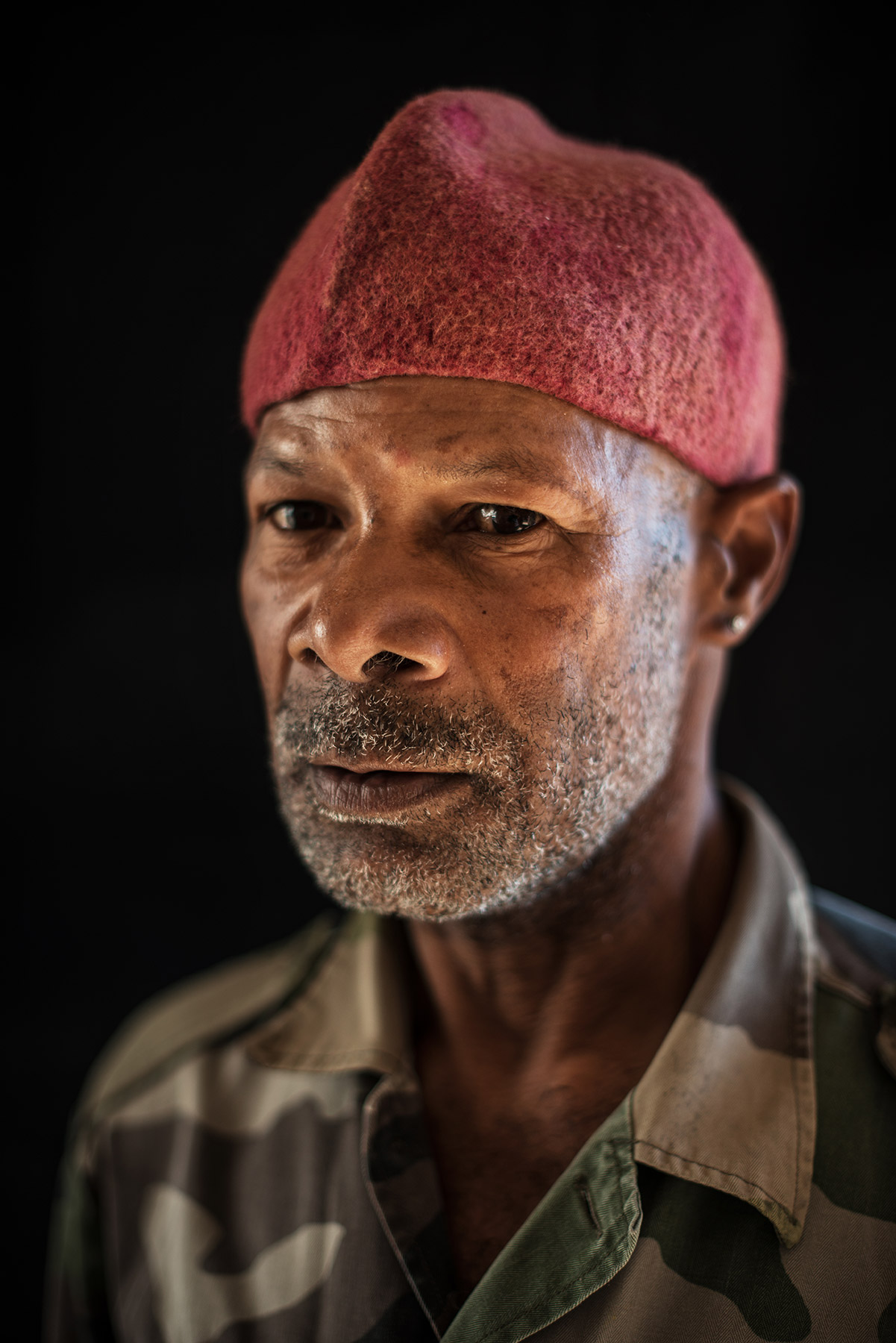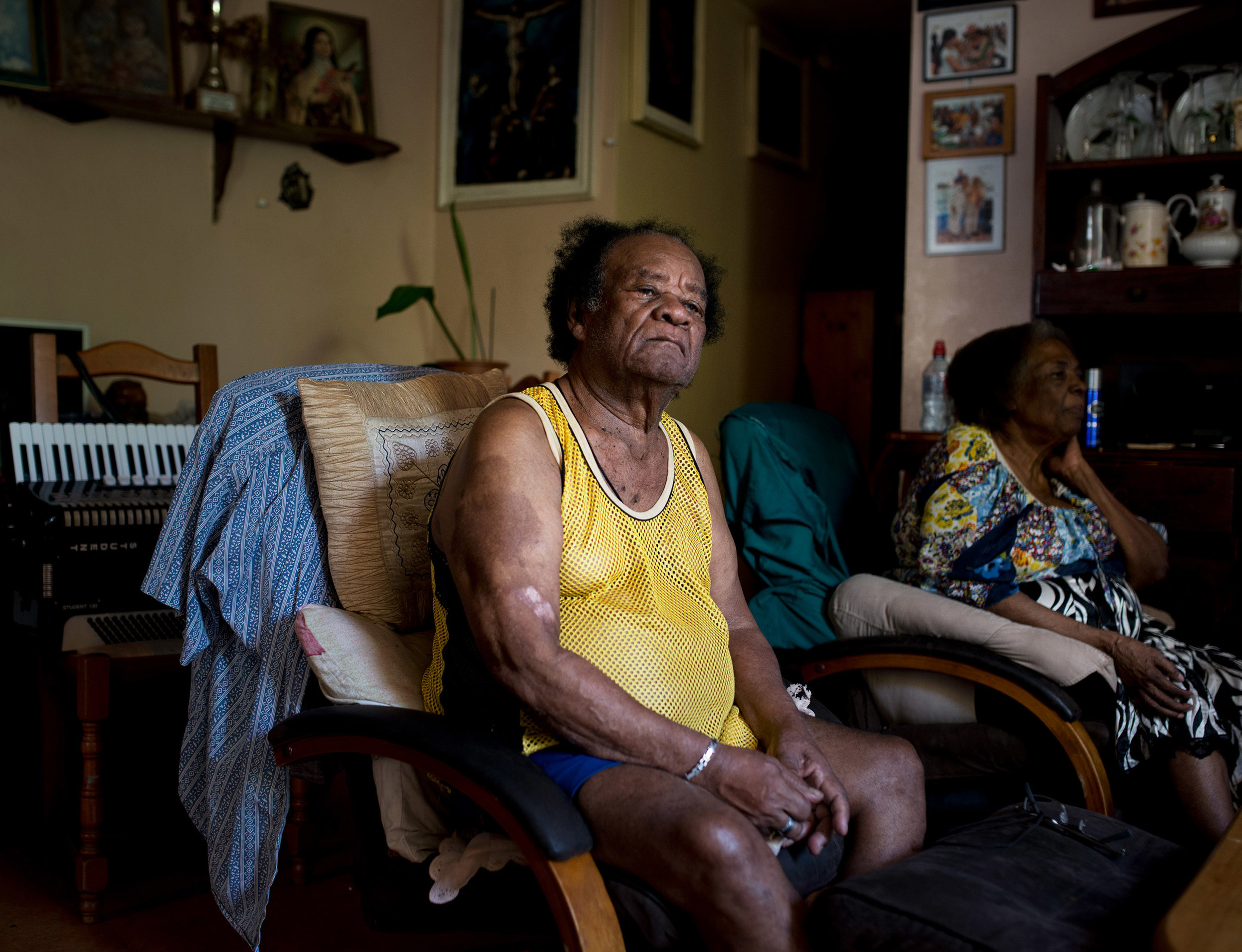
Commune Primat is a small district of Saint-Denis, in Reunion Island. Here, even in 1970’s, a shantytown stretched on a strip of savannah stuck between a bed of river and a ravine. At the end of this dry tongue rose the fumaroles of a open-air dump where piles of garbage from the largest city in the French overseas departments. Closed on one side by the ocean, on the other by a four lane road, Primat is today a city cut off from the world. 1,700 people live in the buildings and semi-detached houses built over the course of RHI's operations – for Resorption of Unsanitary Habitat. The landfill has disappeared, replaced by typical infrastructures of the urban outskirts: football stadium, shopping center, car parks, cemetery and funeral center that dig an empty perimeter around the small concrete village, become an island in the island. At the end of 2015, a study published in a local daily newspaper indicated Commune Primat as the poorest district of Reunion, French department already out of the ordinary on the social plan, where one in two lives below the poverty line. It did not please inhabitants, who are proud of their neighborhood, and often nostalgic for the time before the rehabilitation. Between them, they call themselves the Primatorians, and enjoy the false airs of Roman aristocracy who snore in the title. Urban rumor has long been theirs lent the reputation of being the most brawlers of the island. This hot neighborhood image is, for some, at the origin of the name under which many know the place: « Commune Do Fé » (The burning city ).
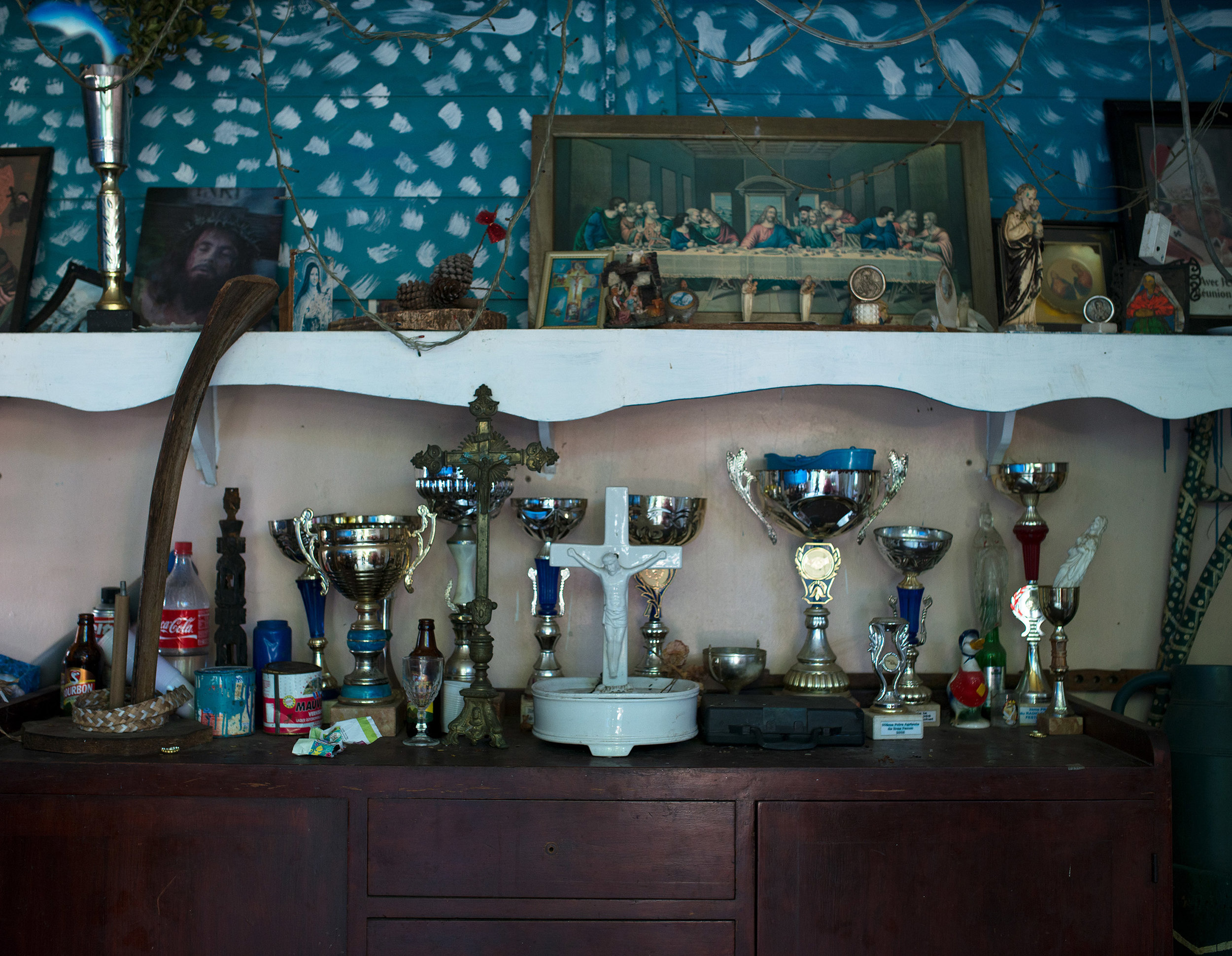
Commune Primat is a small district of Saint-Denis, in Reunion Island. Here, even in 1970’s, a shantytown stretched on a strip of savannah stuck between a bed of river and a ravine. At the end of this dry tongue rose the fumaroles of a open-air dump where piles of garbage from the largest city in the French overseas departments. Closed on one side by the ocean, on the other by a four lane road, Primat is today a city cut off from the world. 1,700 people live in the buildings and semi-detached houses built over the course of RHI's operations – for Resorption of Unsanitary Habitat. The landfill has disappeared, replaced by typical infrastructures of the urban outskirts: football stadium, shopping center, car parks, cemetery and funeral center that dig an empty perimeter around the small concrete village, become an island in the island. At the end of 2015, a study published in a local daily newspaper indicated Commune Primat as the poorest district of Reunion, French department already out of the ordinary on the social plan, where one in two lives below the poverty line. It did not please inhabitants, who are proud of their neighborhood, and often nostalgic for the time before the rehabilitation. Between them, they call themselves the Primatorians, and enjoy the false airs of Roman aristocracy who snore in the title. Urban rumor has long been theirs lent the reputation of being the most brawlers of the island. This hot neighborhood image is, for some, at the origin of the name under which many know the place: « Commune Do Fé » (The burning city ).
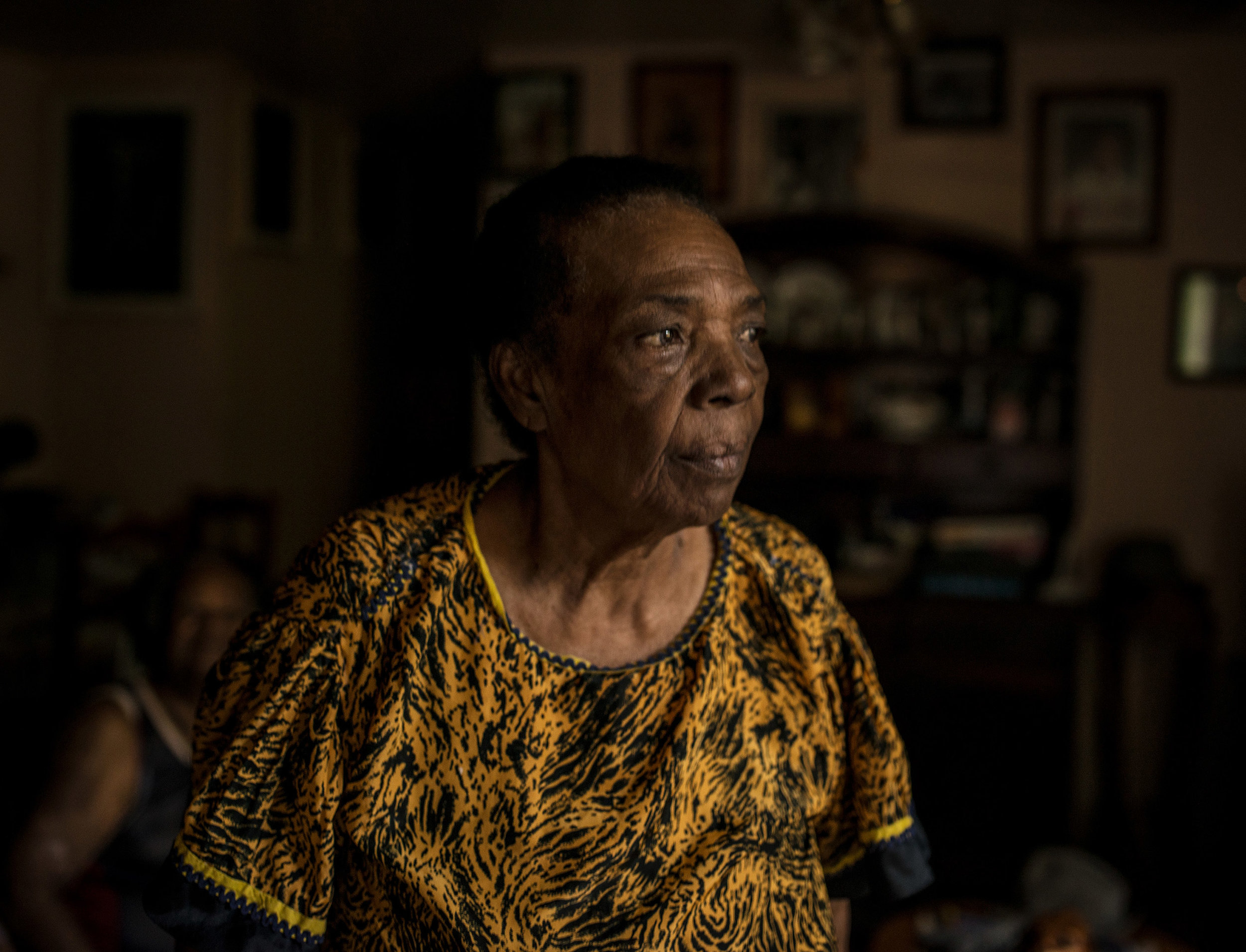
Commune Primat is a small district of Saint-Denis, in Reunion Island. Here, even in 1970’s, a shantytown stretched on a strip of savannah stuck between a bed of river and a ravine. At the end of this dry tongue rose the fumaroles of a open-air dump where piles of garbage from the largest city in the French overseas departments. Closed on one side by the ocean, on the other by a four lane road, Primat is today a city cut off from the world. 1,700 people live in the buildings and semi-detached houses built over the course of RHI's operations – for Resorption of Unsanitary Habitat. The landfill has disappeared, replaced by typical infrastructures of the urban outskirts: football stadium, shopping center, car parks, cemetery and funeral center that dig an empty perimeter around the small concrete village, become an island in the island. At the end of 2015, a study published in a local daily newspaper indicated Commune Primat as the poorest district of Reunion, French department already out of the ordinary on the social plan, where one in two lives below the poverty line. It did not please inhabitants, who are proud of their neighborhood, and often nostalgic for the time before the rehabilitation. Between them, they call themselves the Primatorians, and enjoy the false airs of Roman aristocracy who snore in the title. Urban rumor has long been theirs lent the reputation of being the most brawlers of the island. This hot neighborhood image is, for some, at the origin of the name under which many know the place: « Commune Do Fé » (The burning city ).
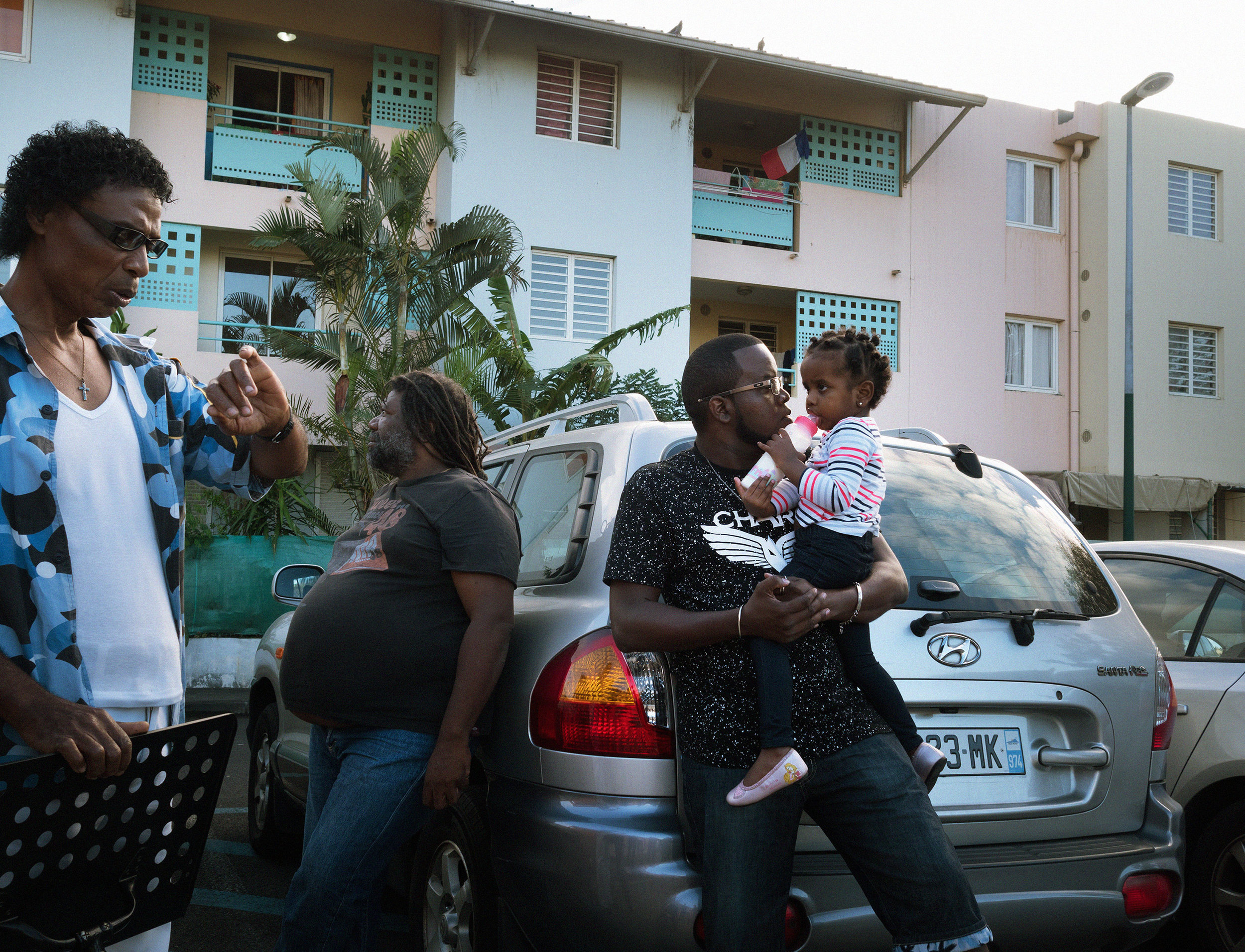
Commune Primat is a small district of Saint-Denis, in Reunion Island. Here, even in 1970’s, a shantytown stretched on a strip of savannah stuck between a bed of river and a ravine. At the end of this dry tongue rose the fumaroles of a open-air dump where piles of garbage from the largest city in the French overseas departments. Closed on one side by the ocean, on the other by a four lane road, Primat is today a city cut off from the world. 1,700 people live in the buildings and semi-detached houses built over the course of RHI's operations – for Resorption of Unsanitary Habitat. The landfill has disappeared, replaced by typical infrastructures of the urban outskirts: football stadium, shopping center, car parks, cemetery and funeral center that dig an empty perimeter around the small concrete village, become an island in the island. At the end of 2015, a study published in a local daily newspaper indicated Commune Primat as the poorest district of Reunion, French department already out of the ordinary on the social plan, where one in two lives below the poverty line. It did not please inhabitants, who are proud of their neighborhood, and often nostalgic for the time before the rehabilitation. Between them, they call themselves the Primatorians, and enjoy the false airs of Roman aristocracy who snore in the title. Urban rumor has long been theirs lent the reputation of being the most brawlers of the island. This hot neighborhood image is, for some, at the origin of the name under which many know the place: « Commune Do Fé » (The burning city ).
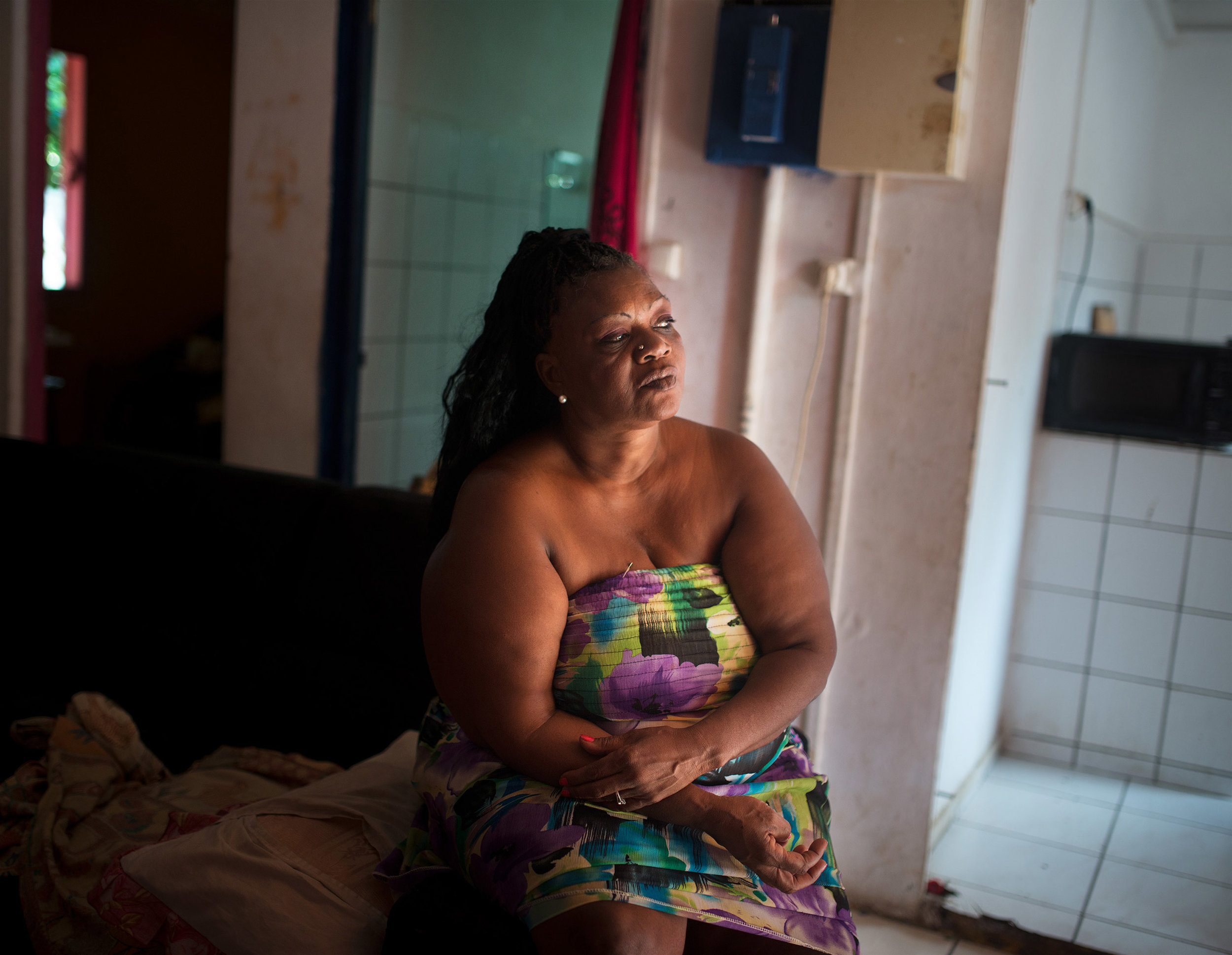
Commune Primat is a small district of Saint-Denis, in Reunion Island. Here, even in 1970’s, a shantytown stretched on a strip of savannah stuck between a bed of river and a ravine. At the end of this dry tongue rose the fumaroles of a open-air dump where piles of garbage from the largest city in the French overseas departments. Closed on one side by the ocean, on the other by a four lane road, Primat is today a city cut off from the world. 1,700 people live in the buildings and semi-detached houses built over the course of RHI's operations – for Resorption of Unsanitary Habitat. The landfill has disappeared, replaced by typical infrastructures of the urban outskirts: football stadium, shopping center, car parks, cemetery and funeral center that dig an empty perimeter around the small concrete village, become an island in the island. At the end of 2015, a study published in a local daily newspaper indicated Commune Primat as the poorest district of Reunion, French department already out of the ordinary on the social plan, where one in two lives below the poverty line. It did not please inhabitants, who are proud of their neighborhood, and often nostalgic for the time before the rehabilitation. Between them, they call themselves the Primatorians, and enjoy the false airs of Roman aristocracy who snore in the title. Urban rumor has long been theirs lent the reputation of being the most brawlers of the island. This hot neighborhood image is, for some, at the origin of the name under which many know the place: « Commune Do Fé » (The burning city ).
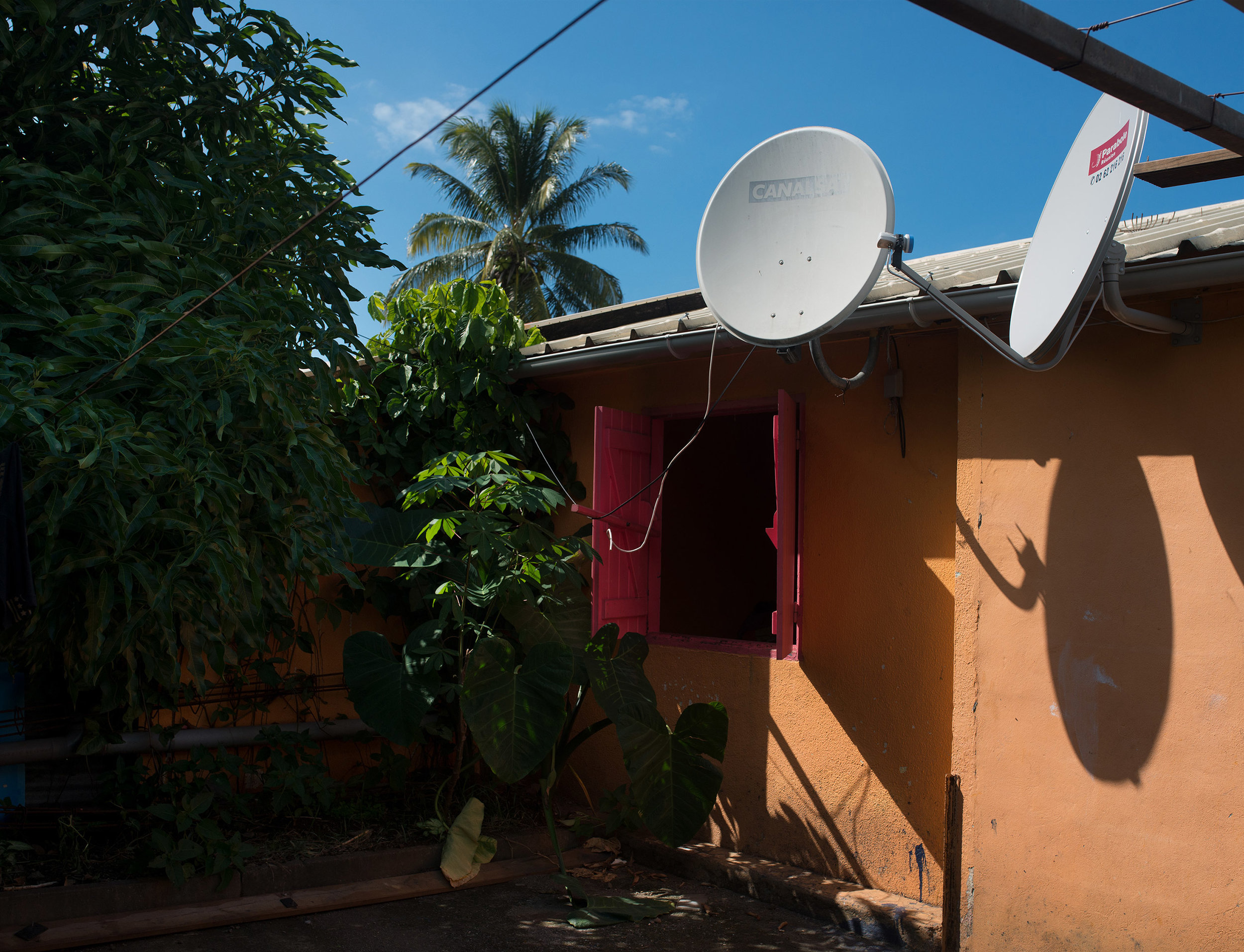
Commune Primat is a small district of Saint-Denis, in Reunion Island. Here, even in 1970’s, a shantytown stretched on a strip of savannah stuck between a bed of river and a ravine. At the end of this dry tongue rose the fumaroles of a open-air dump where piles of garbage from the largest city in the French overseas departments. Closed on one side by the ocean, on the other by a four lane road, Primat is today a city cut off from the world. 1,700 people live in the buildings and semi-detached houses built over the course of RHI's operations – for Resorption of Unsanitary Habitat. The landfill has disappeared, replaced by typical infrastructures of the urban outskirts: football stadium, shopping center, car parks, cemetery and funeral center that dig an empty perimeter around the small concrete village, become an island in the island. At the end of 2015, a study published in a local daily newspaper indicated Commune Primat as the poorest district of Reunion, French department already out of the ordinary on the social plan, where one in two lives below the poverty line. It did not please inhabitants, who are proud of their neighborhood, and often nostalgic for the time before the rehabilitation. Between them, they call themselves the Primatorians, and enjoy the false airs of Roman aristocracy who snore in the title. Urban rumor has long been theirs lent the reputation of being the most brawlers of the island. This hot neighborhood image is, for some, at the origin of the name under which many know the place: « Commune Do Fé » (The burning city ).
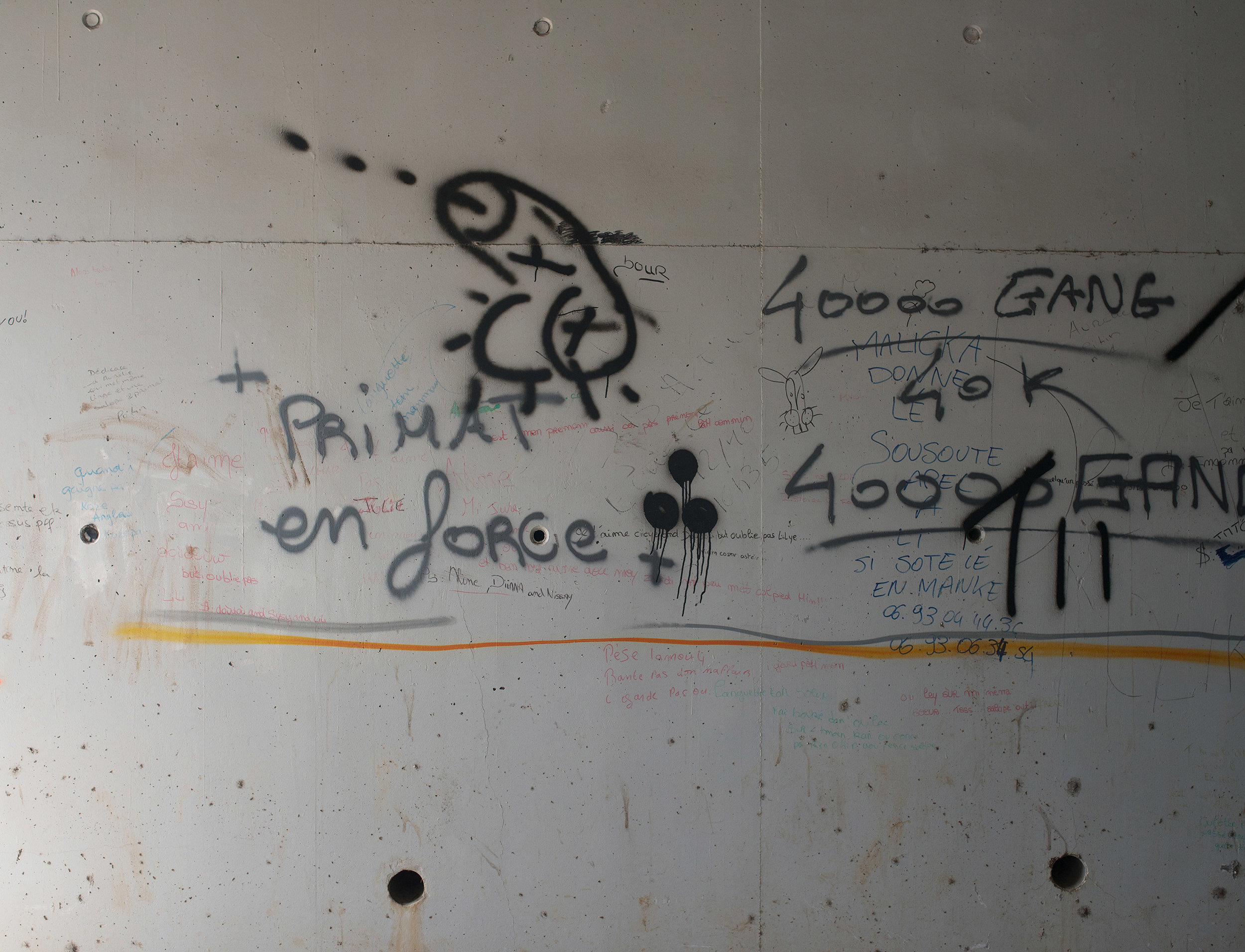
Commune Primat is a small district of Saint-Denis, in Reunion Island. Here, even in 1970’s, a shantytown stretched on a strip of savannah stuck between a bed of river and a ravine. At the end of this dry tongue rose the fumaroles of a open-air dump where piles of garbage from the largest city in the French overseas departments. Closed on one side by the ocean, on the other by a four lane road, Primat is today a city cut off from the world. 1,700 people live in the buildings and semi-detached houses built over the course of RHI's operations – for Resorption of Unsanitary Habitat. The landfill has disappeared, replaced by typical infrastructures of the urban outskirts: football stadium, shopping center, car parks, cemetery and funeral center that dig an empty perimeter around the small concrete village, become an island in the island. At the end of 2015, a study published in a local daily newspaper indicated Commune Primat as the poorest district of Reunion, French department already out of the ordinary on the social plan, where one in two lives below the poverty line. It did not please inhabitants, who are proud of their neighborhood, and often nostalgic for the time before the rehabilitation. Between them, they call themselves the Primatorians, and enjoy the false airs of Roman aristocracy who snore in the title. Urban rumor has long been theirs lent the reputation of being the most brawlers of the island. This hot neighborhood image is, for some, at the origin of the name under which many know the place: « Commune Do Fé » (The burning city ).
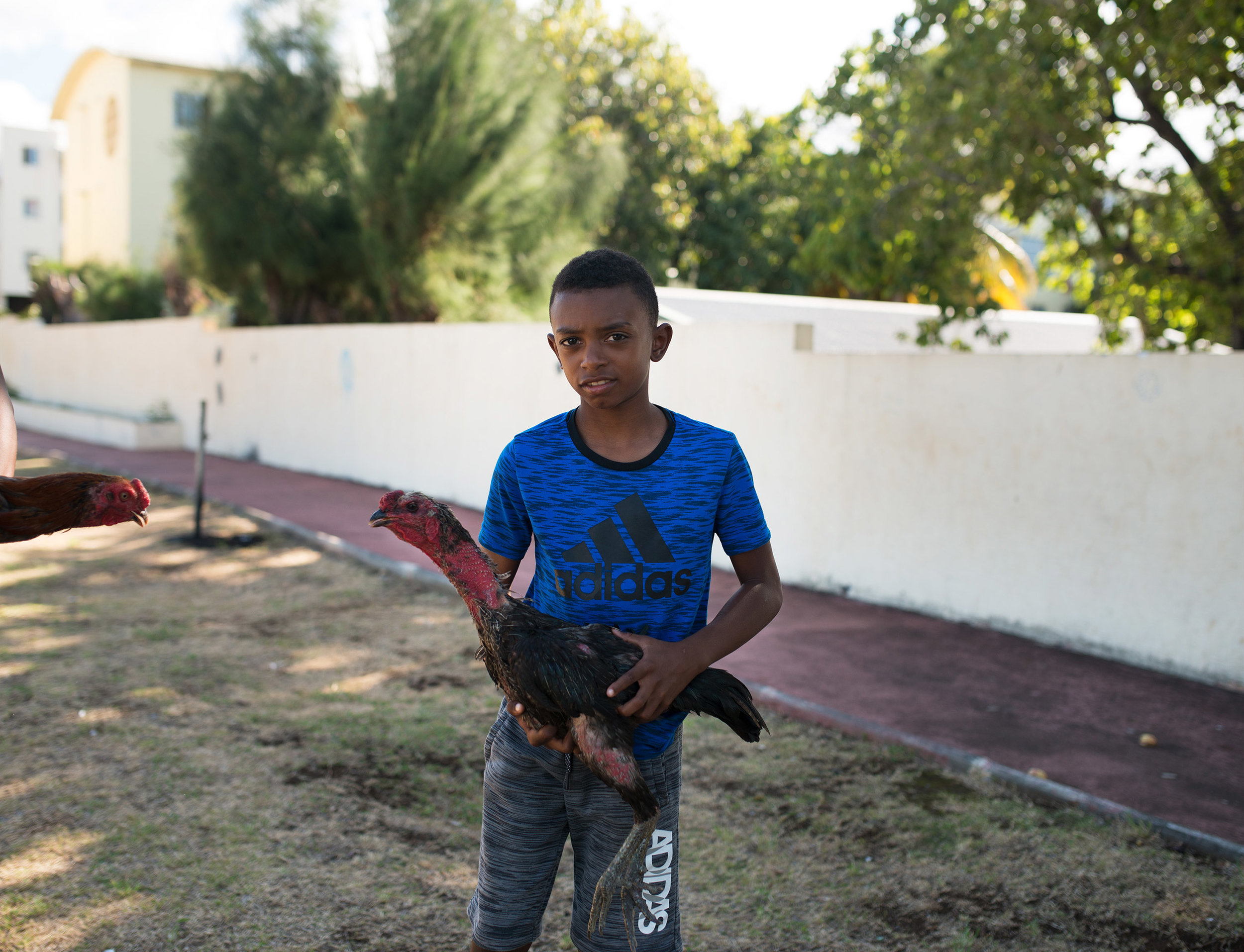
Commune Primat is a small district of Saint-Denis, in Reunion Island. Here, even in 1970’s, a shantytown stretched on a strip of savannah stuck between a bed of river and a ravine. At the end of this dry tongue rose the fumaroles of a open-air dump where piles of garbage from the largest city in the French overseas departments. Closed on one side by the ocean, on the other by a four lane road, Primat is today a city cut off from the world. 1,700 people live in the buildings and semi-detached houses built over the course of RHI's operations – for Resorption of Unsanitary Habitat. The landfill has disappeared, replaced by typical infrastructures of the urban outskirts: football stadium, shopping center, car parks, cemetery and funeral center that dig an empty perimeter around the small concrete village, become an island in the island. At the end of 2015, a study published in a local daily newspaper indicated Commune Primat as the poorest district of Reunion, French department already out of the ordinary on the social plan, where one in two lives below the poverty line. It did not please inhabitants, who are proud of their neighborhood, and often nostalgic for the time before the rehabilitation. Between them, they call themselves the Primatorians, and enjoy the false airs of Roman aristocracy who snore in the title. Urban rumor has long been theirs lent the reputation of being the most brawlers of the island. This hot neighborhood image is, for some, at the origin of the name under which many know the place: « Commune Do Fé » (The burning city ).
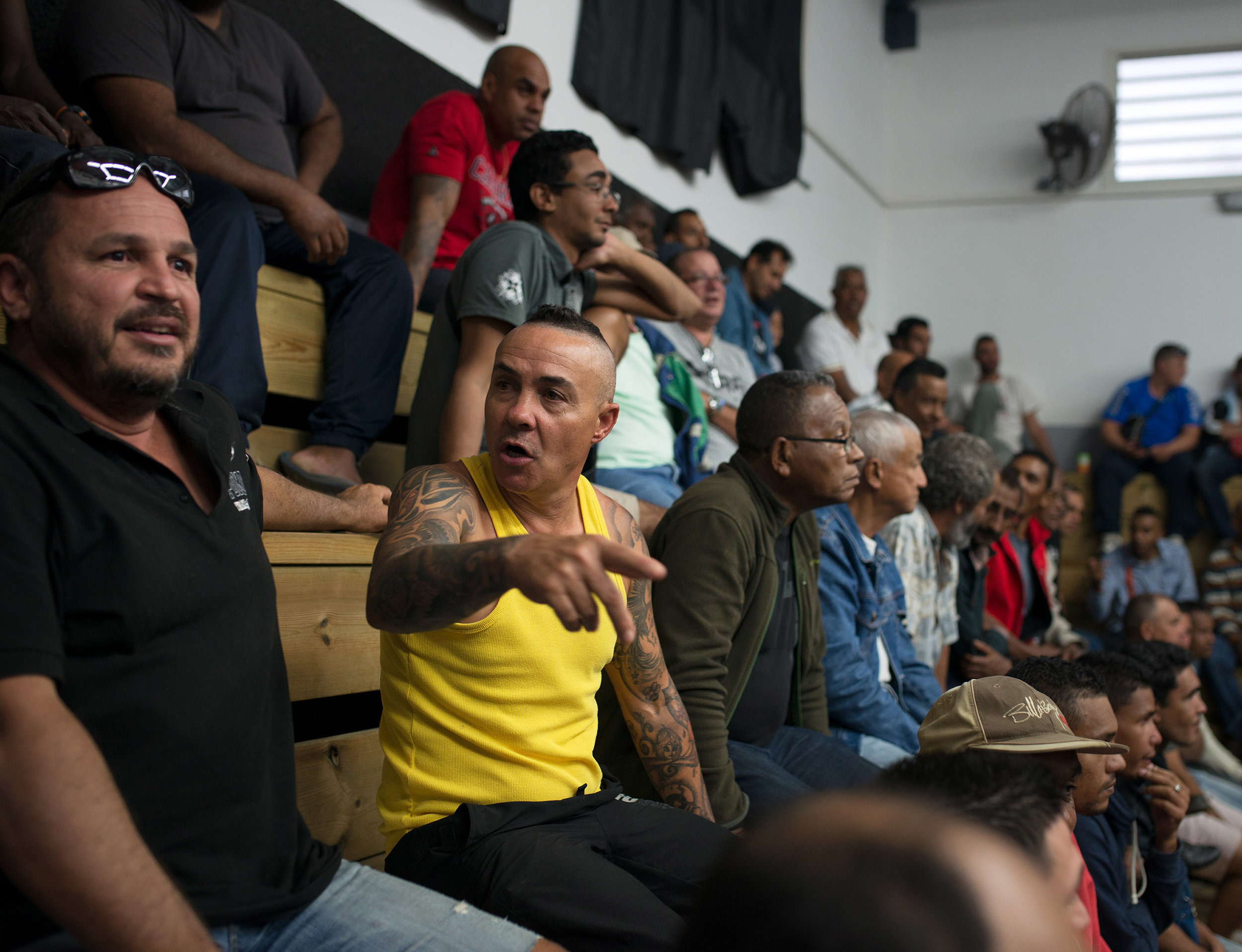
Commune Primat is a small district of Saint-Denis, in Reunion Island. Here, even in 1970’s, a shantytown stretched on a strip of savannah stuck between a bed of river and a ravine. At the end of this dry tongue rose the fumaroles of a open-air dump where piles of garbage from the largest city in the French overseas departments. Closed on one side by the ocean, on the other by a four lane road, Primat is today a city cut off from the world. 1,700 people live in the buildings and semi-detached houses built over the course of RHI's operations – for Resorption of Unsanitary Habitat. The landfill has disappeared, replaced by typical infrastructures of the urban outskirts: football stadium, shopping center, car parks, cemetery and funeral center that dig an empty perimeter around the small concrete village, become an island in the island. At the end of 2015, a study published in a local daily newspaper indicated Commune Primat as the poorest district of Reunion, French department already out of the ordinary on the social plan, where one in two lives below the poverty line. It did not please inhabitants, who are proud of their neighborhood, and often nostalgic for the time before the rehabilitation. Between them, they call themselves the Primatorians, and enjoy the false airs of Roman aristocracy who snore in the title. Urban rumor has long been theirs lent the reputation of being the most brawlers of the island. This hot neighborhood image is, for some, at the origin of the name under which many know the place: « Commune Do Fé » (The burning city ).
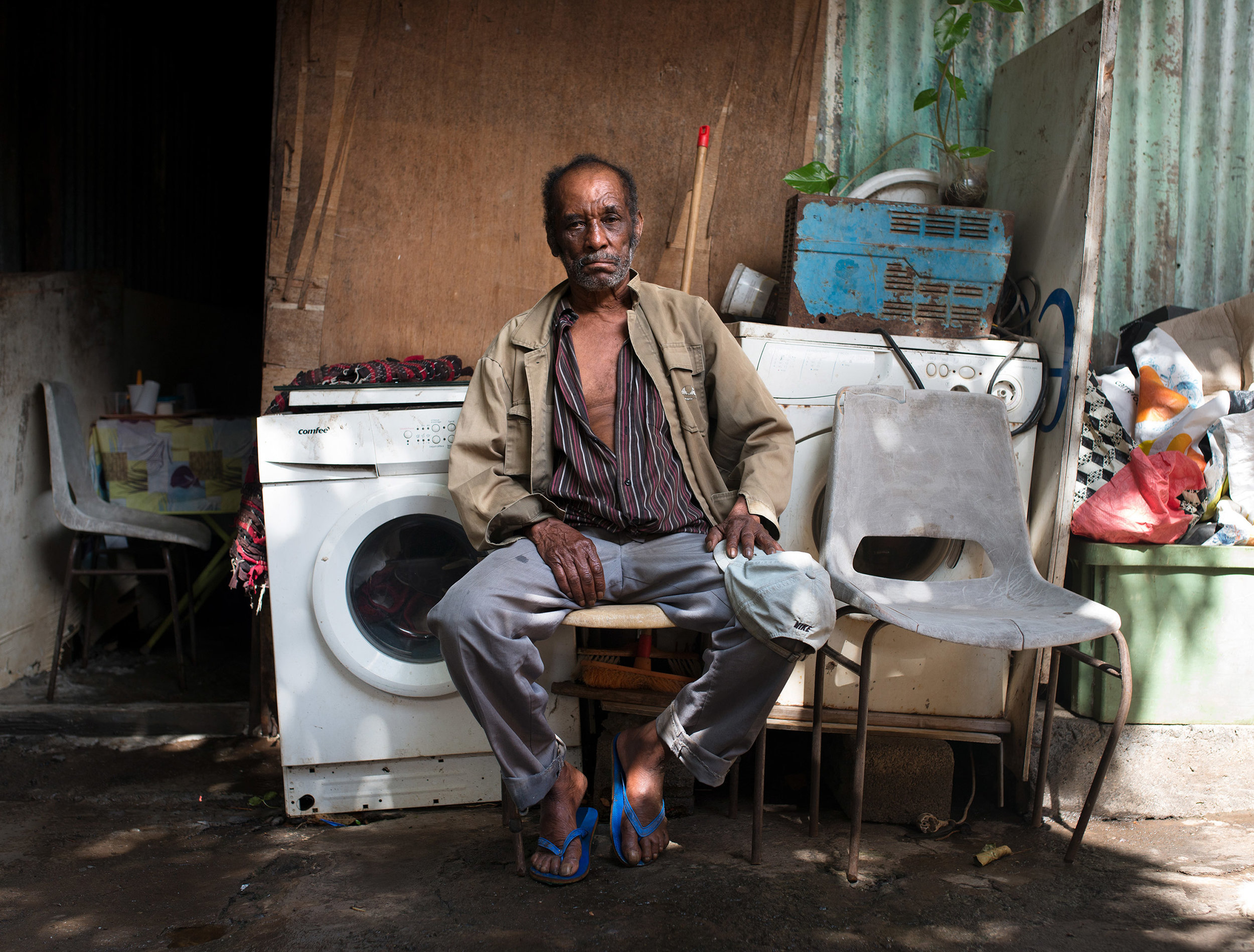
Commune Primat is a small district of Saint-Denis, in Reunion Island. Here, even in 1970’s, a shantytown stretched on a strip of savannah stuck between a bed of river and a ravine. At the end of this dry tongue rose the fumaroles of a open-air dump where piles of garbage from the largest city in the French overseas departments. Closed on one side by the ocean, on the other by a four lane road, Primat is today a city cut off from the world. 1,700 people live in the buildings and semi-detached houses built over the course of RHI's operations – for Resorption of Unsanitary Habitat. The landfill has disappeared, replaced by typical infrastructures of the urban outskirts: football stadium, shopping center, car parks, cemetery and funeral center that dig an empty perimeter around the small concrete village, become an island in the island. At the end of 2015, a study published in a local daily newspaper indicated Commune Primat as the poorest district of Reunion, French department already out of the ordinary on the social plan, where one in two lives below the poverty line. It did not please inhabitants, who are proud of their neighborhood, and often nostalgic for the time before the rehabilitation. Between them, they call themselves the Primatorians, and enjoy the false airs of Roman aristocracy who snore in the title. Urban rumor has long been theirs lent the reputation of being the most brawlers of the island. This hot neighborhood image is, for some, at the origin of the name under which many know the place: « Commune Do Fé » (The burning city ).
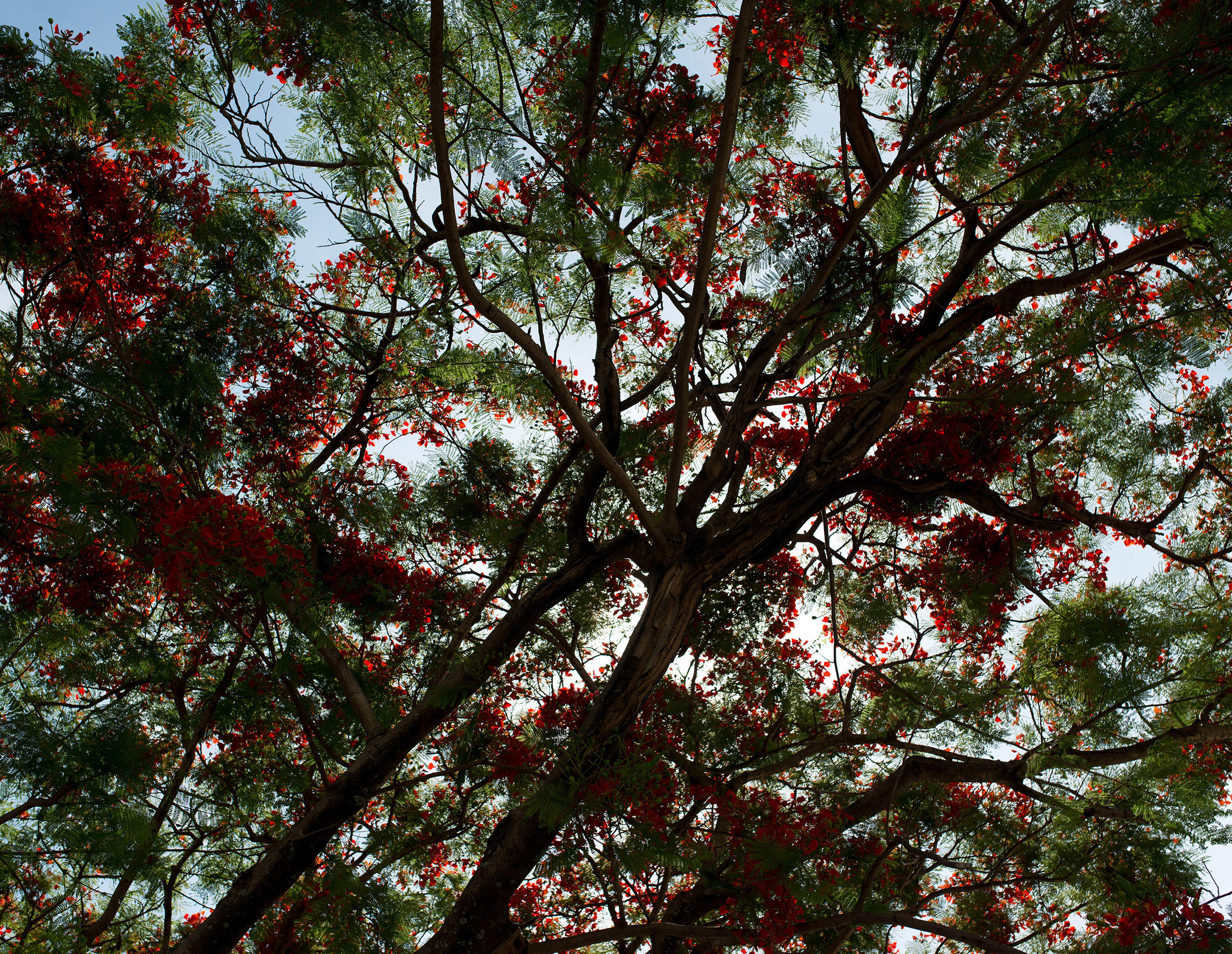
Commune Primat is a small district of Saint-Denis, in Reunion Island. Here, even in 1970’s, a shantytown stretched on a strip of savannah stuck between a bed of river and a ravine. At the end of this dry tongue rose the fumaroles of a open-air dump where piles of garbage from the largest city in the French overseas departments. Closed on one side by the ocean, on the other by a four lane road, Primat is today a city cut off from the world. 1,700 people live in the buildings and semi-detached houses built over the course of RHI's operations – for Resorption of Unsanitary Habitat. The landfill has disappeared, replaced by typical infrastructures of the urban outskirts: football stadium, shopping center, car parks, cemetery and funeral center that dig an empty perimeter around the small concrete village, become an island in the island. At the end of 2015, a study published in a local daily newspaper indicated Commune Primat as the poorest district of Reunion, French department already out of the ordinary on the social plan, where one in two lives below the poverty line. It did not please inhabitants, who are proud of their neighborhood, and often nostalgic for the time before the rehabilitation. Between them, they call themselves the Primatorians, and enjoy the false airs of Roman aristocracy who snore in the title. Urban rumor has long been theirs lent the reputation of being the most brawlers of the island. This hot neighborhood image is, for some, at the origin of the name under which many know the place: « Commune Do Fé » (The burning city ).
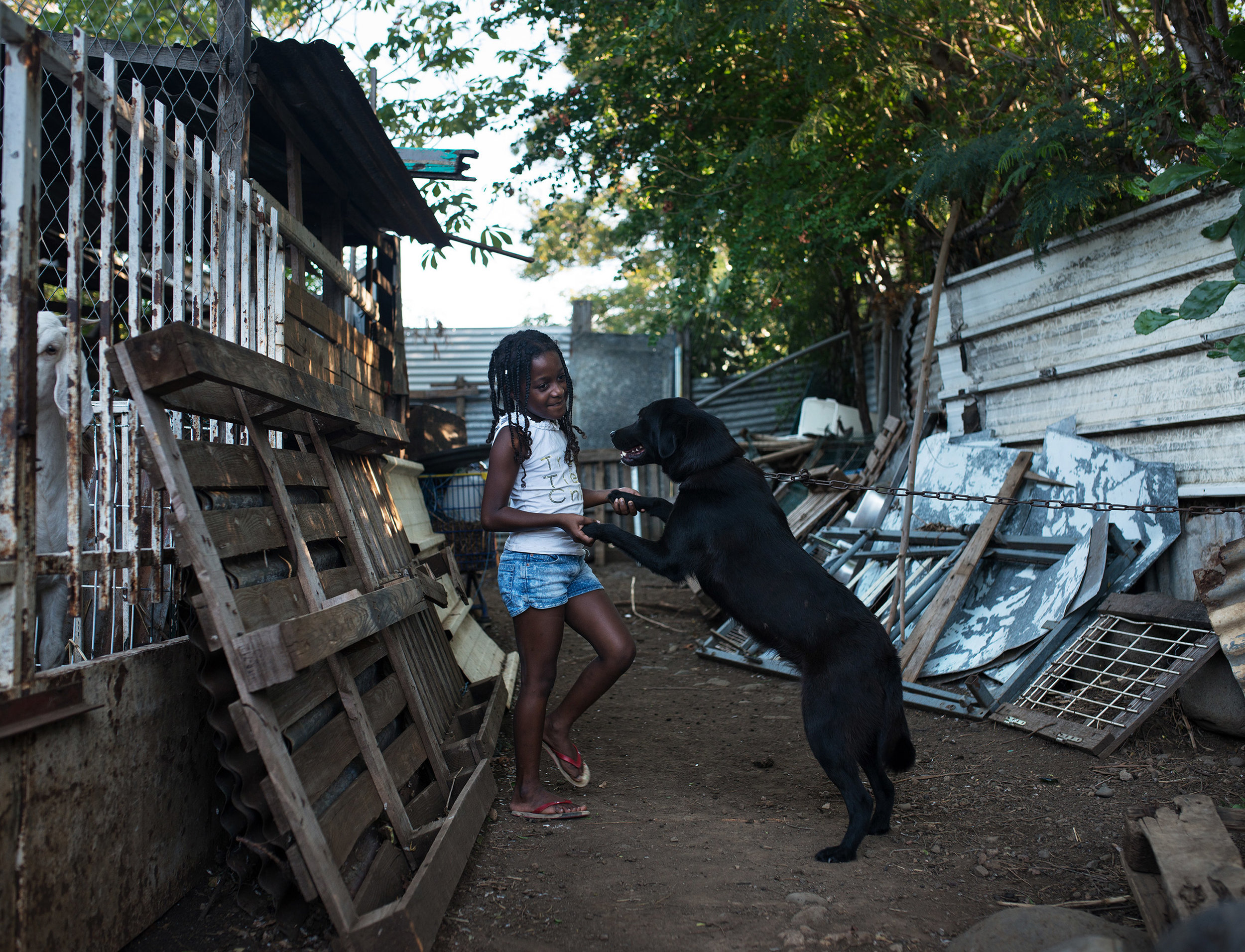
Commune Primat is a small district of Saint-Denis, in Reunion Island. Here, even in 1970’s, a shantytown stretched on a strip of savannah stuck between a bed of river and a ravine. At the end of this dry tongue rose the fumaroles of a open-air dump where piles of garbage from the largest city in the French overseas departments. Closed on one side by the ocean, on the other by a four lane road, Primat is today a city cut off from the world. 1,700 people live in the buildings and semi-detached houses built over the course of RHI's operations – for Resorption of Unsanitary Habitat. The landfill has disappeared, replaced by typical infrastructures of the urban outskirts: football stadium, shopping center, car parks, cemetery and funeral center that dig an empty perimeter around the small concrete village, become an island in the island. At the end of 2015, a study published in a local daily newspaper indicated Commune Primat as the poorest district of Reunion, French department already out of the ordinary on the social plan, where one in two lives below the poverty line. It did not please inhabitants, who are proud of their neighborhood, and often nostalgic for the time before the rehabilitation. Between them, they call themselves the Primatorians, and enjoy the false airs of Roman aristocracy who snore in the title. Urban rumor has long been theirs lent the reputation of being the most brawlers of the island. This hot neighborhood image is, for some, at the origin of the name under which many know the place: « Commune Do Fé » (The burning city ).
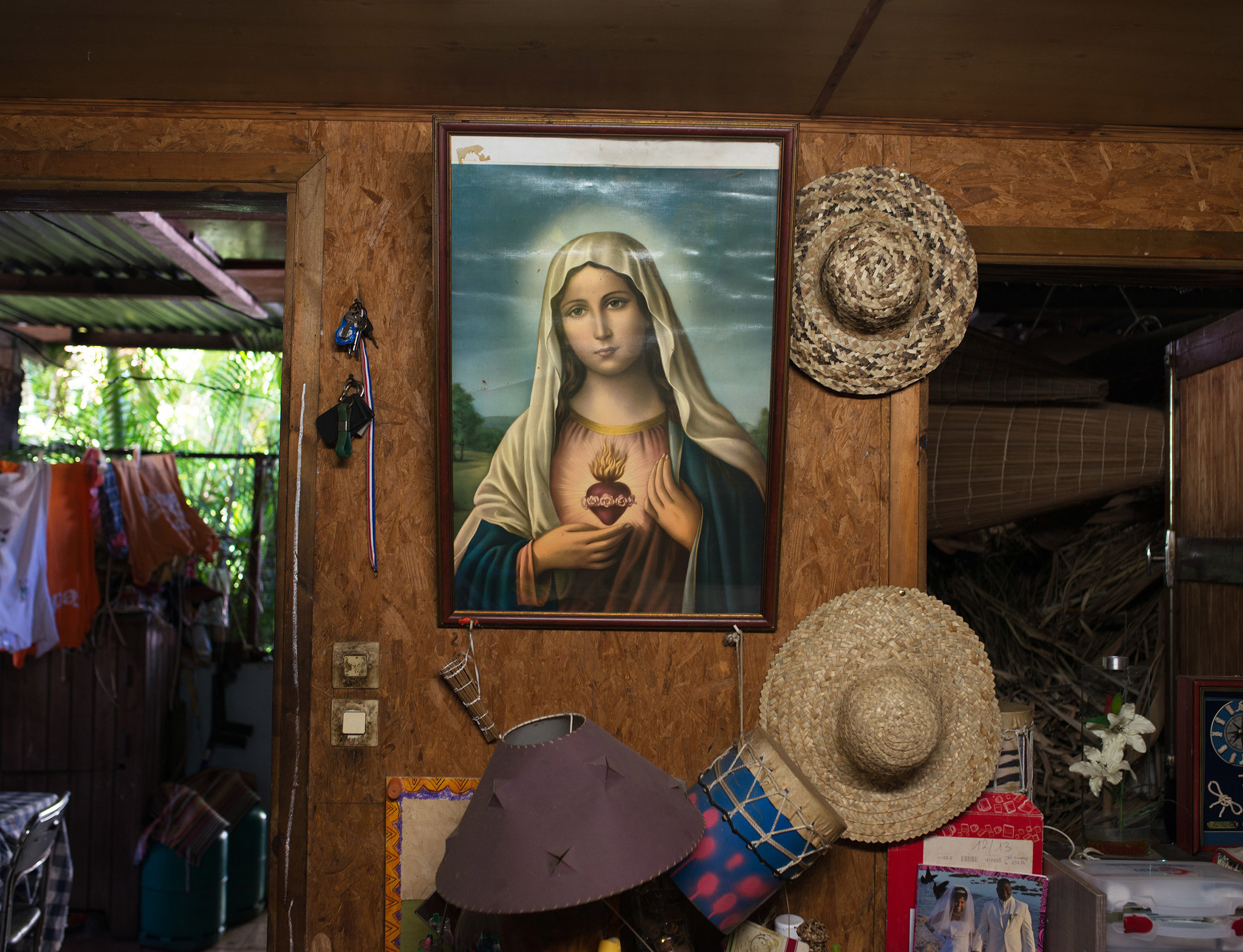
Commune Primat is a small district of Saint-Denis, in Reunion Island. Here, even in 1970’s, a shantytown stretched on a strip of savannah stuck between a bed of river and a ravine. At the end of this dry tongue rose the fumaroles of a open-air dump where piles of garbage from the largest city in the French overseas departments. Closed on one side by the ocean, on the other by a four lane road, Primat is today a city cut off from the world. 1,700 people live in the buildings and semi-detached houses built over the course of RHI's operations – for Resorption of Unsanitary Habitat. The landfill has disappeared, replaced by typical infrastructures of the urban outskirts: football stadium, shopping center, car parks, cemetery and funeral center that dig an empty perimeter around the small concrete village, become an island in the island. At the end of 2015, a study published in a local daily newspaper indicated Commune Primat as the poorest district of Reunion, French department already out of the ordinary on the social plan, where one in two lives below the poverty line. It did not please inhabitants, who are proud of their neighborhood, and often nostalgic for the time before the rehabilitation. Between them, they call themselves the Primatorians, and enjoy the false airs of Roman aristocracy who snore in the title. Urban rumor has long been theirs lent the reputation of being the most brawlers of the island. This hot neighborhood image is, for some, at the origin of the name under which many know the place: « Commune Do Fé » (The burning city ).

Commune Primat is a small district of Saint-Denis, in Reunion Island. Here, even in 1970’s, a shantytown stretched on a strip of savannah stuck between a bed of river and a ravine. At the end of this dry tongue rose the fumaroles of a open-air dump where piles of garbage from the largest city in the French overseas departments. Closed on one side by the ocean, on the other by a four lane road, Primat is today a city cut off from the world. 1,700 people live in the buildings and semi-detached houses built over the course of RHI's operations – for Resorption of Unsanitary Habitat. The landfill has disappeared, replaced by typical infrastructures of the urban outskirts: football stadium, shopping center, car parks, cemetery and funeral center that dig an empty perimeter around the small concrete village, become an island in the island. At the end of 2015, a study published in a local daily newspaper indicated Commune Primat as the poorest district of Reunion, French department already out of the ordinary on the social plan, where one in two lives below the poverty line. It did not please inhabitants, who are proud of their neighborhood, and often nostalgic for the time before the rehabilitation. Between them, they call themselves the Primatorians, and enjoy the false airs of Roman aristocracy who snore in the title. Urban rumor has long been theirs lent the reputation of being the most brawlers of the island. This hot neighborhood image is, for some, at the origin of the name under which many know the place: « Commune Do Fé » (The burning city ).
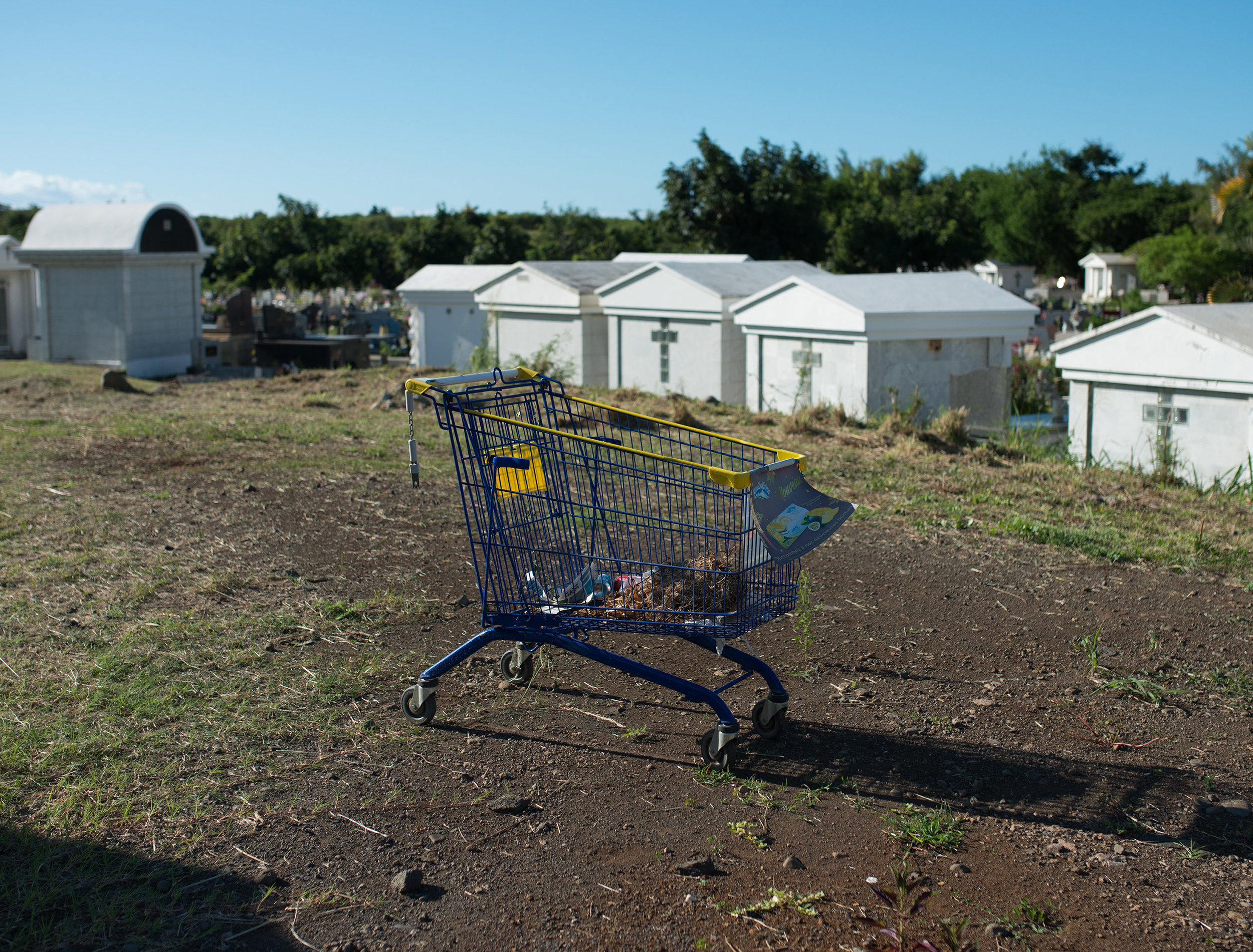
Commune Primat is a small district of Saint-Denis, in Reunion Island. Here, even in 1970’s, a shantytown stretched on a strip of savannah stuck between a bed of river and a ravine. At the end of this dry tongue rose the fumaroles of a open-air dump where piles of garbage from the largest city in the French overseas departments. Closed on one side by the ocean, on the other by a four lane road, Primat is today a city cut off from the world. 1,700 people live in the buildings and semi-detached houses built over the course of RHI's operations – for Resorption of Unsanitary Habitat. The landfill has disappeared, replaced by typical infrastructures of the urban outskirts: football stadium, shopping center, car parks, cemetery and funeral center that dig an empty perimeter around the small concrete village, become an island in the island. At the end of 2015, a study published in a local daily newspaper indicated Commune Primat as the poorest district of Reunion, French department already out of the ordinary on the social plan, where one in two lives below the poverty line. It did not please inhabitants, who are proud of their neighborhood, and often nostalgic for the time before the rehabilitation. Between them, they call themselves the Primatorians, and enjoy the false airs of Roman aristocracy who snore in the title. Urban rumor has long been theirs lent the reputation of being the most brawlers of the island. This hot neighborhood image is, for some, at the origin of the name under which many know the place: « Commune Do Fé » (The burning city ).
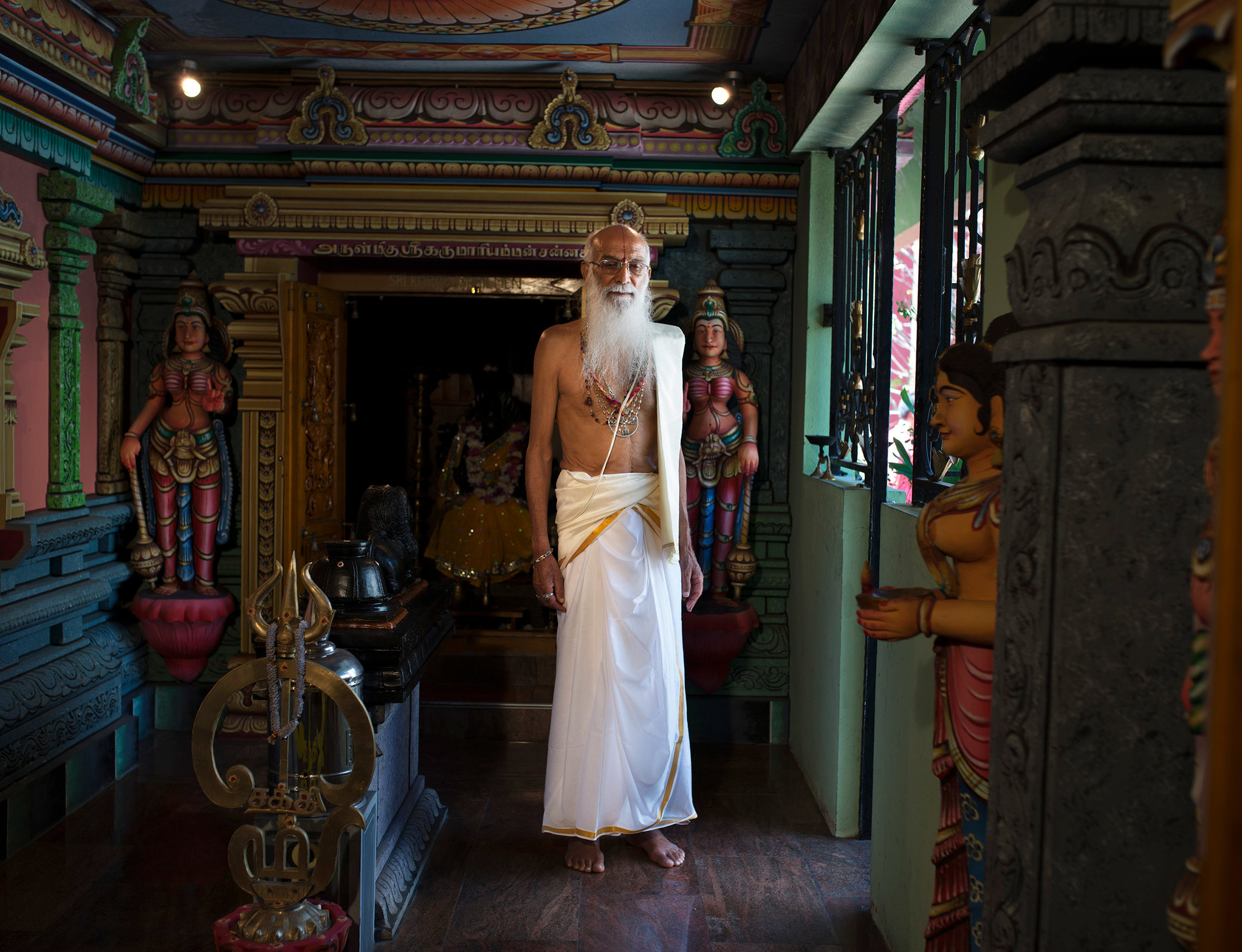
Commune Primat is a small district of Saint-Denis, in Reunion Island. Here, even in 1970’s, a shantytown stretched on a strip of savannah stuck between a bed of river and a ravine. At the end of this dry tongue rose the fumaroles of a open-air dump where piles of garbage from the largest city in the French overseas departments. Closed on one side by the ocean, on the other by a four lane road, Primat is today a city cut off from the world. 1,700 people live in the buildings and semi-detached houses built over the course of RHI's operations – for Resorption of Unsanitary Habitat. The landfill has disappeared, replaced by typical infrastructures of the urban outskirts: football stadium, shopping center, car parks, cemetery and funeral center that dig an empty perimeter around the small concrete village, become an island in the island. At the end of 2015, a study published in a local daily newspaper indicated Commune Primat as the poorest district of Reunion, French department already out of the ordinary on the social plan, where one in two lives below the poverty line. It did not please inhabitants, who are proud of their neighborhood, and often nostalgic for the time before the rehabilitation. Between them, they call themselves the Primatorians, and enjoy the false airs of Roman aristocracy who snore in the title. Urban rumor has long been theirs lent the reputation of being the most brawlers of the island. This hot neighborhood image is, for some, at the origin of the name under which many know the place: « Commune Do Fé » (The burning city ).
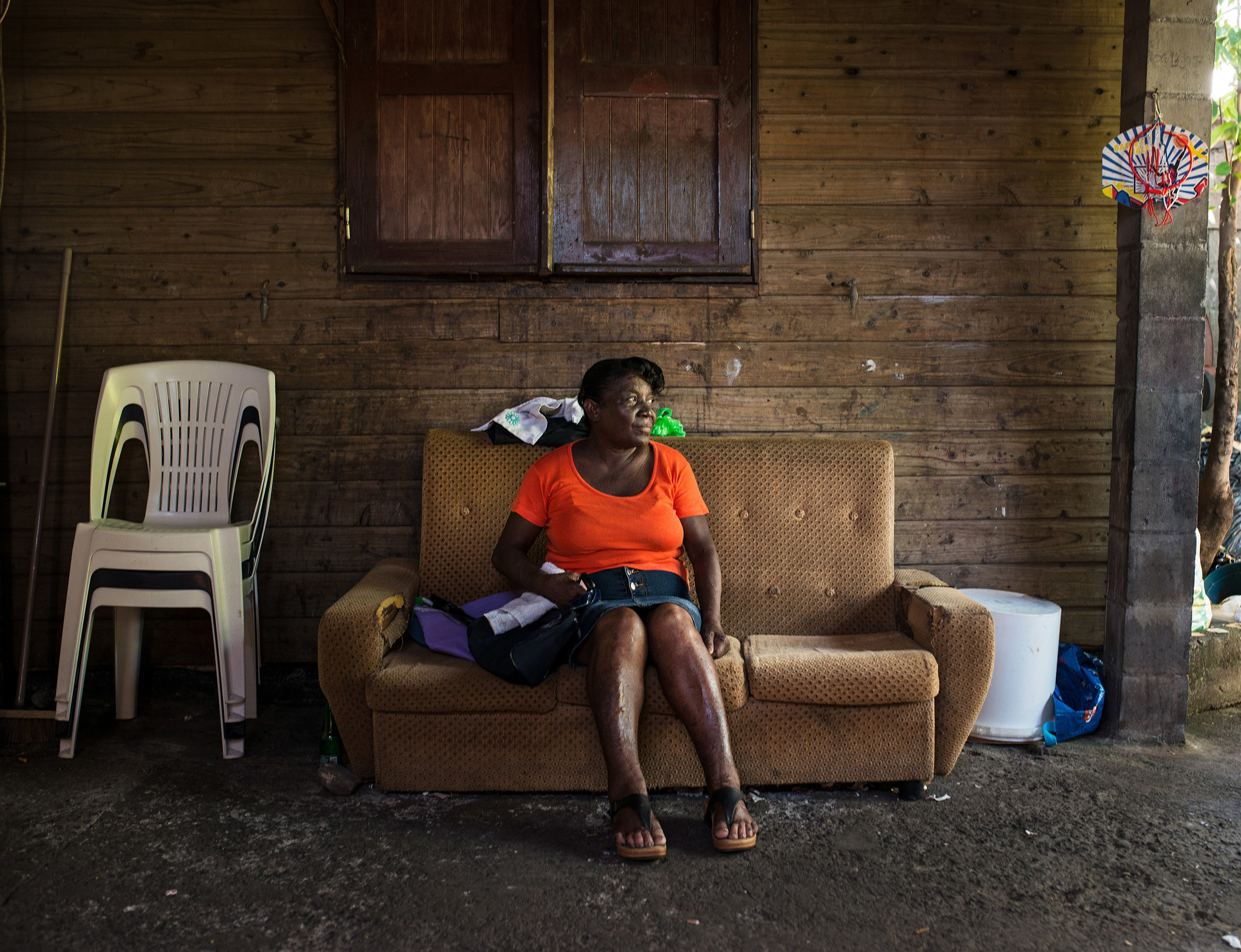
Commune Primat is a small district of Saint-Denis, in Reunion Island. Here, even in 1970’s, a shantytown stretched on a strip of savannah stuck between a bed of river and a ravine. At the end of this dry tongue rose the fumaroles of a open-air dump where piles of garbage from the largest city in the French overseas departments. Closed on one side by the ocean, on the other by a four lane road, Primat is today a city cut off from the world. 1,700 people live in the buildings and semi-detached houses built over the course of RHI's operations – for Resorption of Unsanitary Habitat. The landfill has disappeared, replaced by typical infrastructures of the urban outskirts: football stadium, shopping center, car parks, cemetery and funeral center that dig an empty perimeter around the small concrete village, become an island in the island. At the end of 2015, a study published in a local daily newspaper indicated Commune Primat as the poorest district of Reunion, French department already out of the ordinary on the social plan, where one in two lives below the poverty line. It did not please inhabitants, who are proud of their neighborhood, and often nostalgic for the time before the rehabilitation. Between them, they call themselves the Primatorians, and enjoy the false airs of Roman aristocracy who snore in the title. Urban rumor has long been theirs lent the reputation of being the most brawlers of the island. This hot neighborhood image is, for some, at the origin of the name under which many know the place: « Commune Do Fé » (The burning city ).
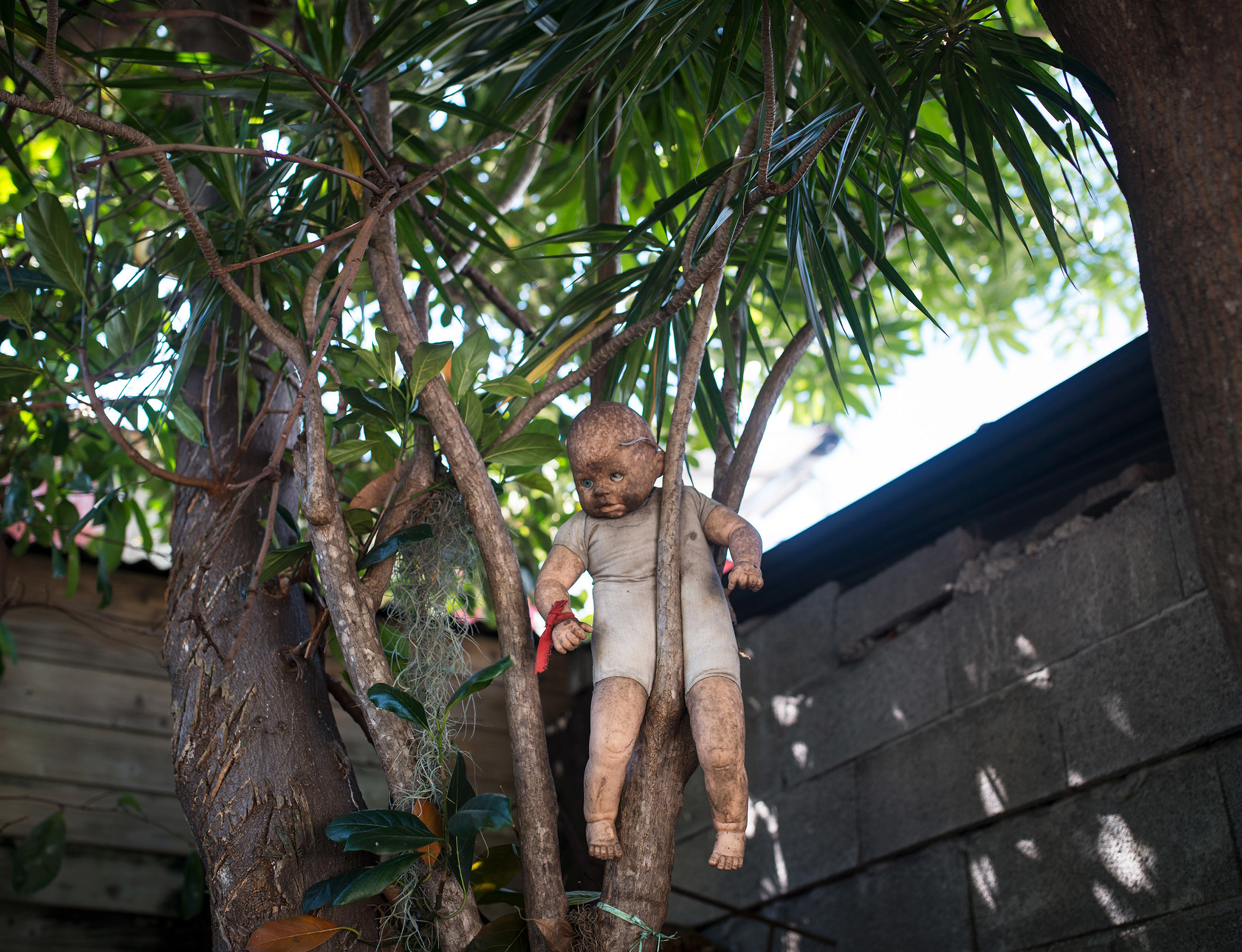
Commune Primat is a small district of Saint-Denis, in Reunion Island. Here, even in 1970’s, a shantytown stretched on a strip of savannah stuck between a bed of river and a ravine. At the end of this dry tongue rose the fumaroles of a open-air dump where piles of garbage from the largest city in the French overseas departments. Closed on one side by the ocean, on the other by a four lane road, Primat is today a city cut off from the world. 1,700 people live in the buildings and semi-detached houses built over the course of RHI's operations – for Resorption of Unsanitary Habitat. The landfill has disappeared, replaced by typical infrastructures of the urban outskirts: football stadium, shopping center, car parks, cemetery and funeral center that dig an empty perimeter around the small concrete village, become an island in the island. At the end of 2015, a study published in a local daily newspaper indicated Commune Primat as the poorest district of Reunion, French department already out of the ordinary on the social plan, where one in two lives below the poverty line. It did not please inhabitants, who are proud of their neighborhood, and often nostalgic for the time before the rehabilitation. Between them, they call themselves the Primatorians, and enjoy the false airs of Roman aristocracy who snore in the title. Urban rumor has long been theirs lent the reputation of being the most brawlers of the island. This hot neighborhood image is, for some, at the origin of the name under which many know the place: « Commune Do Fé » (The burning city ).
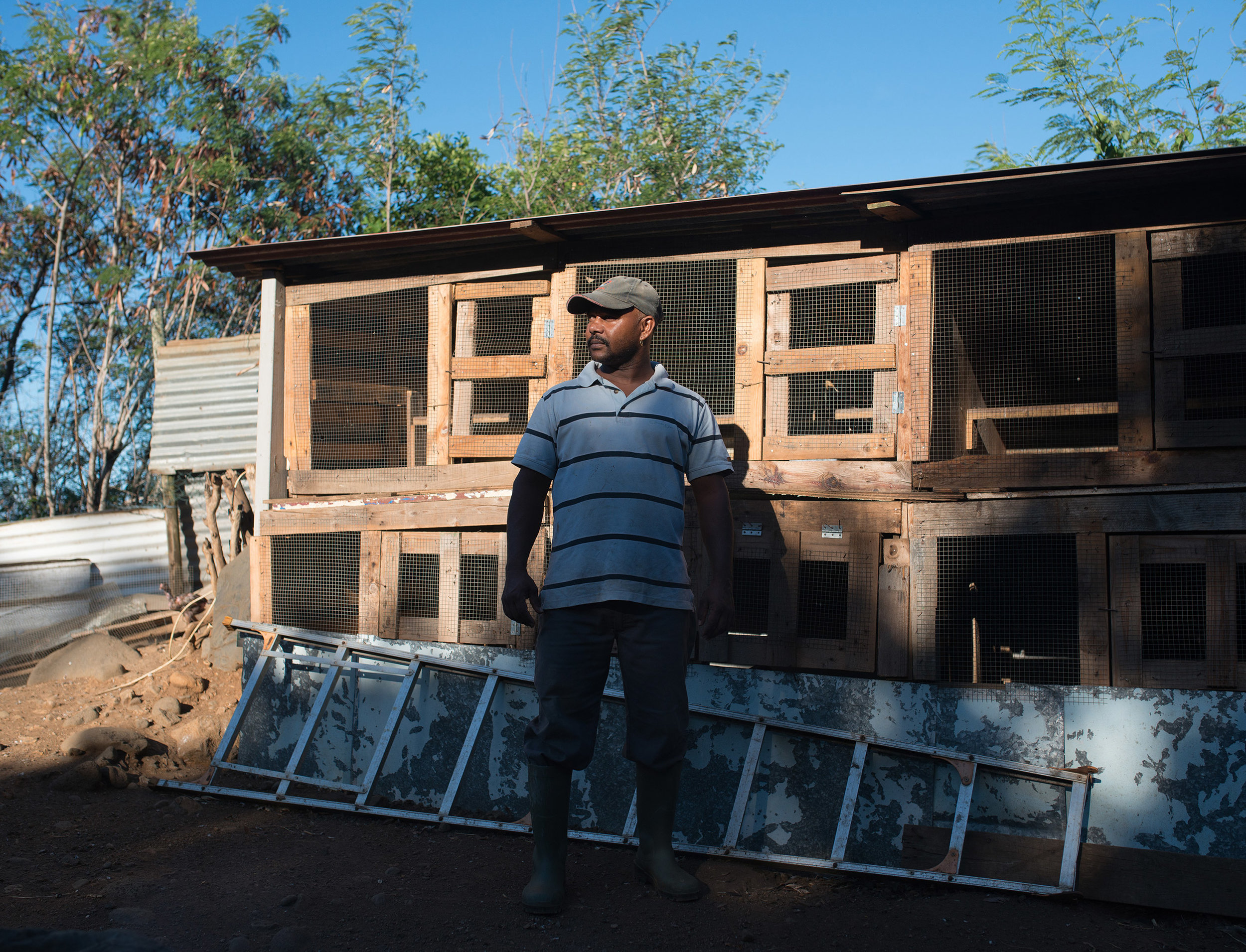
Commune Primat is a small district of Saint-Denis, in Reunion Island. Here, even in 1970’s, a shantytown stretched on a strip of savannah stuck between a bed of river and a ravine. At the end of this dry tongue rose the fumaroles of a open-air dump where piles of garbage from the largest city in the French overseas departments. Closed on one side by the ocean, on the other by a four lane road, Primat is today a city cut off from the world. 1,700 people live in the buildings and semi-detached houses built over the course of RHI's operations – for Resorption of Unsanitary Habitat. The landfill has disappeared, replaced by typical infrastructures of the urban outskirts: football stadium, shopping center, car parks, cemetery and funeral center that dig an empty perimeter around the small concrete village, become an island in the island. At the end of 2015, a study published in a local daily newspaper indicated Commune Primat as the poorest district of Reunion, French department already out of the ordinary on the social plan, where one in two lives below the poverty line. It did not please inhabitants, who are proud of their neighborhood, and often nostalgic for the time before the rehabilitation. Between them, they call themselves the Primatorians, and enjoy the false airs of Roman aristocracy who snore in the title. Urban rumor has long been theirs lent the reputation of being the most brawlers of the island. This hot neighborhood image is, for some, at the origin of the name under which many know the place: « Commune Do Fé » (The burning city ).
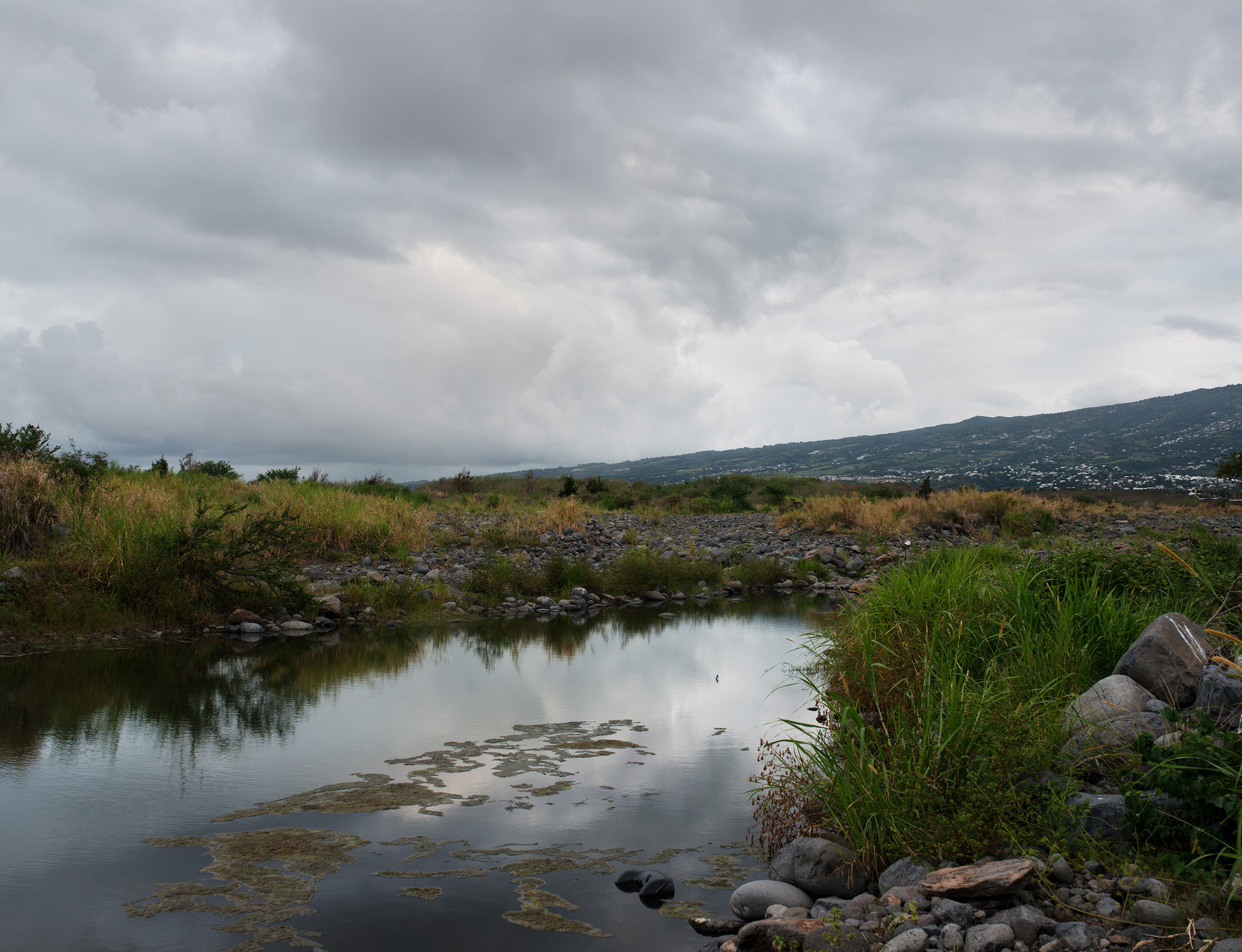
Commune Primat is a small district of Saint-Denis, in Reunion Island. Here, even in 1970’s, a shantytown stretched on a strip of savannah stuck between a bed of river and a ravine. At the end of this dry tongue rose the fumaroles of a open-air dump where piles of garbage from the largest city in the French overseas departments. Closed on one side by the ocean, on the other by a four lane road, Primat is today a city cut off from the world. 1,700 people live in the buildings and semi-detached houses built over the course of RHI's operations – for Resorption of Unsanitary Habitat. The landfill has disappeared, replaced by typical infrastructures of the urban outskirts: football stadium, shopping center, car parks, cemetery and funeral center that dig an empty perimeter around the small concrete village, become an island in the island. At the end of 2015, a study published in a local daily newspaper indicated Commune Primat as the poorest district of Reunion, French department already out of the ordinary on the social plan, where one in two lives below the poverty line. It did not please inhabitants, who are proud of their neighborhood, and often nostalgic for the time before the rehabilitation. Between them, they call themselves the Primatorians, and enjoy the false airs of Roman aristocracy who snore in the title. Urban rumor has long been theirs lent the reputation of being the most brawlers of the island. This hot neighborhood image is, for some, at the origin of the name under which many know the place: « Commune Do Fé » (The burning city ).




















Commune do fé
Commune Primat is a small district of Saint-Denis, in Reunion Island. Here, even in 1970’s, a shantytown stretched on a strip of savannah stuck between a bed of river and a ravine. At the end of this dry tongue rose the fumaroles of a open-air dump where piles of garbage from the largest city in the French overseas departments. Closed on one side by the ocean, on the other by a four lane road, Primat is today a city cut off from the world. 1,700 people live in the buildings and semi-detached houses built over the course of RHI's operations – for Resorption of Unsanitary Habitat. The landfill has disappeared, replaced by typical infrastructures of the urban outskirts: football stadium, shopping center, car parks, cemetery and funeral center that dig an empty perimeter around the small concrete village, become an island in the island.
At the end of 2015, a study published in a local daily newspaper indicated Commune Primat as the poorest district of Reunion, French department already out of the ordinary on the social plan, where one in two lives below the poverty line. It did not please inhabitants, who are proud of their neighborhood, and often nostalgic for the time before the rehabilitation. Between them, they call themselves the Primatorians, and enjoy the false airs of Roman aristocracy who snore in the title. Urban rumor has long been theirs lent the reputation of being the most brawlers of the island. This hot neighborhood image is, for some, at the origin of the name under which many know the place: « Commune Do Fé » (The burning city ).




